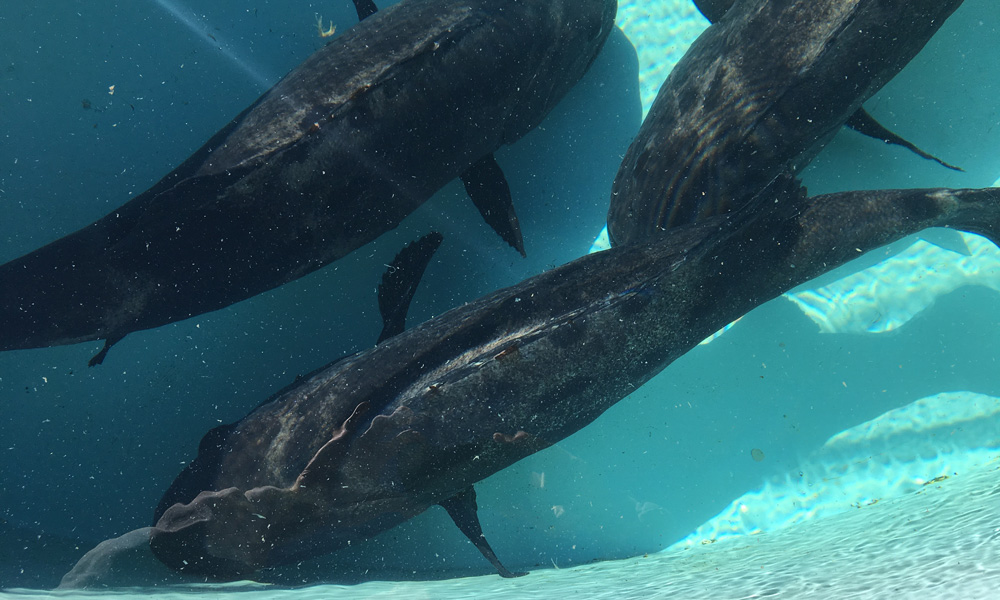The Ocean Studies Institute (OSI) is a collaboration of nine CSU campuses offering members access to joint research, support vessels and a diving safety program for marine research. OSI is now part of the Southern California Marine Institute, a research and resources partnership of the CSU, University of Californi, Los Angeles, Occidental College and University of Southern California.
Giant Sea Bass Spawning and Sound Production Study

Dr. Larry Allen’s Giant Sea Bass Spawning and Sound Production study is being conducted at the Southern California Marine Institute (SCMI) in San Pedro. The three Giant Sea Bass (GSB) are thriving in the tanks at SCMI and in June 2018, began to court and make sounds. Initially, Dr. Allen and his students completed the acoustic monitoring of the captive Giant Sea Bass through two breeding seasons (partial summer of 2017 and all of 2018). After hundreds of recording sessions with both a handheld TASCAM hydrophone and SoundTrap underwater hydrophones, only “booms” recorded, presumably from the male Giant Sea Bass SOK-3 (known as “Maxie”). In short, these “booms” and concert bass drums have similar acoustic profiles ranging from 30 to 90 Hz in max frequencies.
However, on May 28, 2019, the captive giants began spawning in the tank at SCMI. There have since been seven successful spawns with the fertilized eggs collected and distributed to rearing facilities at both the Aquarium of the Pacific in Long Beach and the Cabrillo Marine Aquarium. The staffs at both of these aquaria have, to date, reared about 700 juvenile Giant Sea Bass through the settlement stage. Rearing baby giants to this size has never been accomplished. A letter of agreement will be signed with the California Department of Fish and Wildlife to release these young-of-year into known nursery areas (e.g., head of Redondo Canyon).
More important to the acoustic study, the fish began producing a new type of sound during spawning events. The male GSB (SOK-3) produced an abrupt “snare drum” sound during the evenings of each spawn. The acoustic frequency characteristics were similar to the known “booms”, but was repeated at a very high rate. The information gathered by this study will allow Allen to complete the description of the courtship and mating behaviors of this ecologically and economically important species. Finally, both the “boom” and “snare drum” sounds will aid greatly in the identification of spawning areas for Giant Sea Bass throughout their current range.